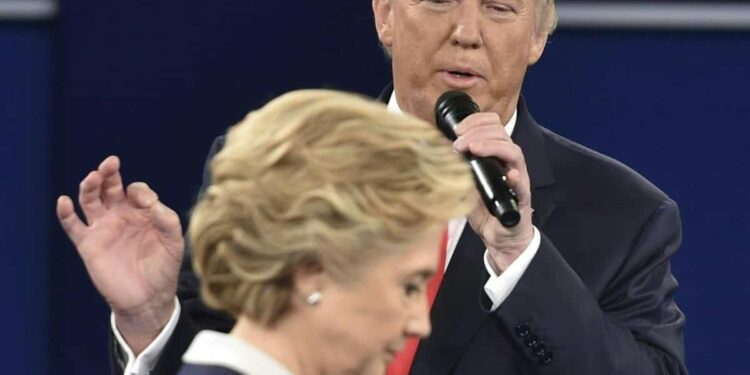American pollsters failed to anticipate Donald Trump’s victory in 2016 and overestimated the margin by which Joe Biden won in 2020. Have they learned enough from their mistakes to be more precise this year?
• Also read: (PHOTOS) The Trump dynasty or the Harris blended family: which family will win the battle for the White House?
• Also read: United States: The Fool and the Sneer
• Also read: ON VIDEO | Beyoncé speaks at Kamala Harris rally
Opinion polls currently show Kamala Harris and Donald Trump neck and neck. But if they underestimate, once again, the vote in favor of the Republican, the latter could well triumph.
The heart of the problem has not changed since the resounding arrival of Donald Trump on the American political scene: a segment of his electorate refuses to participate in opinion surveys.
And to deal with this difficulty, “we have not found a magic formula,” summarizes Courtney Kennedy, head of methodology at the renowned Pew Research Center.
In the meantime, to correct the situation, each pollster chooses its methods.
In 2020, many voters called on the phone to participate in a poll “were shouting “Trump!” and hung up,” without being taken into account, says Don Levy, director of the Siena College Research Institute, which publishes with the New York Times closely followed investigations.
To try to better take into account these conservative voters who are suspicious of institutions, Siena now considers those respondents who hang up, even if they do not answer the other questions.
And Siena calls back several times people who don’t pick up, rather than trying another phone number, in order to reach “more potential Trump voters”, explains Don Levy to AFP.
The Pew Research Center, for its part, suggests that respondents respond via the internet or by telephone, to better reach young people in the first case, and older and conservative people in the second.
Compensate for flaws
Once the responses have been collected, pollsters can use the rectification technique. In other words, if a group of the general population is not sufficiently represented in the panel of respondents, for example, Republicans from rural areas, adjusting this group amounts to giving it greater weight in the final result in order to compensate for the flaws in the constitution of the sampling.
Don Levy explains that his survey New York Times/Siena is thus adjusted with as a reference point an estimate of what the electorate will be in 2024, an estimate itself based on previous elections.
“It seems like a great idea, but it’s not really going to work, because it amounts to estimating that the voters of 2024 are going to look like those of 2020,” warns Joshua Clinton, professor of political science at Vanderbilt University and specialist in surveys. And this will not be the case, according to him.
Siena actually uses many variables, including ethnicity, age, and likelihood of voting. But this disagreement illustrates the differences between pollsters on the way forward.
“Discreet” voter
Joshua Clinton points out another risk. “If you look at 2016 and 2020, you’re tempted to conclude that the polls are still underestimating Republicans,” he says, “but that’s not true.”
He recalls that in the mid-term elections, in 2022, “in the key state of Michigan, the polls underestimated (the Democratic vote). “So who can know what will happen in 2024?”
Don Levy also raises the possibility of another phenomenon, that of a “discreet Harris voter” who, surrounded by Republicans, would not want to tell his relatives and pollsters that he is voting for the Democrat.
Courtney Kennedy doesn’t have much faith in Democratic underestimation this year. “I have seen enough data to conclude” that above all, “it is very hard to have enough support from Trump in opinion polls,” says the specialist.
In any case, continues Joshua Clinton, the race for the White House is today so close that “it is impossible to use a poll to decide between” the two candidates.



